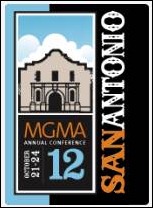
There’s been a lot of talk lately about the perils of cloned documentation. I had several readers forward me the recent notification from Medicare administrative contractor National Government Services that states that it will deny payments for encounters whose documentation appears cloned.
Let’s face it. Many of us have been creating what could be construed as cloned documentation since our residency days. Back when the average length of stay was a little longer (especially on a teaching service), we were encouraged to completely recap the contents of the previous day’s note, which often led to copying.
With 15 or 20 patients on our rosters, it was often impossible to remember subtleties about each patient, so you just copied what you had from the previous day, updated the lab values, any new complaints, etc. It was a lot like using copy forward / update technology in EHRs today, except a pen with a drug company logo and some truly horrific penmanship was involved.
When dictating discharge summaries, the vast majority of patients had strikingly similar exams since patients had to have largely normalized to go home: Heart regular rate and rhythm; no murmurs, rubs or gallops; lungs clear to auscultation bilaterally; and so on. When confronted with a stack of discharge summaries to dictate (which lazy attending physicians had kindly “flipped” our way) on patients we had maybe seen once, they all started to sound remarkably alike in other ways as well.
I remember being on service at a pediatric hospital, where in a single call night I personally admitted 17 patients for asthma exacerbation. The other interns on the team had at least five or 10 asthma patients each as well. Since there were three interns on a team, the senior resident was covering nearly 50 patients – and more than 30 of them had similar chief complaints and presentations. We had strict criteria for who was admitted (thanks to evidence-based medicine), so their presentations were actually very similar, and all had failed identical interventions in the emergency department before admission. You can bet those senior resident notes didn’t have any new or different information than what was presented in ours.
Ditto on Labor and Delivery during residency, where I trained at one of the highest volume birthing hospitals in the region. Since a normal uncomplicated childbirth really isn’t an illness, the documentation was routine and nearly identical. It would have been difficult to find truly unique information to write about some of the patients. I supposed we could have put in frivolous information like, “This blonde Caucasian mother of the adorable blue-eyed infant has no complaints,” but we were tasked with rounding, not writing beautiful, flowing prose.
My problem with the entire issue of cloned notes is that no one really has defined what they consider cloned, making this just another arbitrary way for payers to deny reimbursement. One contractor defines it as, “Documentation that repeats language from previous entries on that patient or from other patients with similar conditions.” I dare anyone to find a note written in the last two decades that doesn’t repeat language in some way, shape, or form.
Prior to EHR, I used a homegrown paper template documentation system that created remarkably uniform notes. On the positive side, it also created remarkably high-quality visits. Clinical decision support was baked into the documentation forms for various chief complaints. We often took materials provided by various professional organizations (AAFP, AAP, ACOG, CDC, etc.) and customized it to meet local and payer guidelines. For uncomplicated illness (strep throat, sinusitis, urinary tract infection, etc.) the notes would be strikingly similar from patient to patient.
Why is it bad thing for the physician to document exactly the appropriate information to substantiate level of care and quality? Should extraneous information be required for payment so that the note appears individualized just for the sake of being individualized?
I can easily avoid the appearance of cloned documentation across patients by including nuance information in the history of present illness. I have no problems doing so if it is relevant to the patient’s story and his or her care.
Another issue entirely is that of cloned documentation within a single patient chart. Regulators and anti-EHR voices are after those of us who like to “drag and drop” previous visits into today’s note, then update it. Note that I said “update.” I didn’t say drag, drop, and depart. Who among us who actually cares for patients does not have at least a few dozen “Groundhog Day” patients, those where every single visit is the same? I’m talking about patients like the noncompliant hypertensive diabetic who refuses to follow the instructions from the previous visit. Every single assessment and plan looks something like this:
1) Diabetes: Reviewed blood sugar log. Counseled patient to take medications as directed and continue 1,800-calorie ADA diet. Patient to exercise 30 minutes daily and check blood sugars daily, bringing meter to next visit for download.
2) Hypertension: Counseled again regarding sodium intake and packaged foods. Exercise as above, continue medications.
3) Obesity: Discussed diet and exercise as above. Refer to nutritionist. Discussed consequences of continued noncompliance including worsening of chronic health conditions, heart disease, and potentially premature death.
Really, what else do I need to say here? Maybe I should start adding incremental data like, “Counseled patient for the 15th time” to make it more individualized. Or I could document specific details of the data in the blood sugar log, but that would be redundant and also introduce a potential source of error as I manually key numbers into my note.
The bottom line is this. Why should I not be able to pull this data forward, then update or add to it? It’s clear, it’s complete, and it accurately documents what I stated in the visit. I shouldn’t have to add extraneous information just to satisfy an auditor.
A friend of mine has a collection of hilarious patient visit notes (of course, with any patient identifiers carefully redacted with a broad-tip Sharpie) from both the paper and EHR realms. One of my favorite pages in his scrapbook is the ultimate healthcare haiku, written before the days of E&M Coding:
Boil-Lanced.
And that, dear readers, is a thing of beauty.
Have a great example of patient documentation to share? E-mail me.

E-mail Dr. Jayne.


































You know what will radically improve patient lives? Universal healthcare, access to housing, paid childcare, better public transport. Improve a…